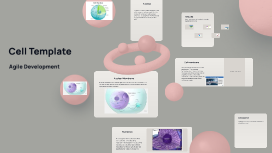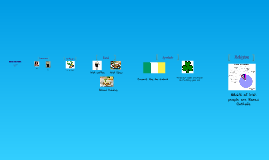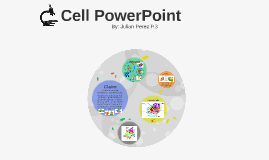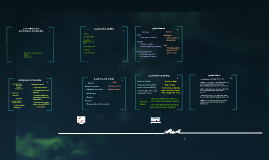Cell PowerPoint
Transcript: Structures formed by tubulin, the make up of microtubles Located near the nucleus Help to organize cell division and are only found in plant cells Organelles that convert the chemical energy in food into compounds that are more convenient for the cell to use Have two membranes "powerhouse" of the cell What are they? Prokaryotes VS Eukaryotes DNA Ribosomes Sack-like structure that stores materials such as water, salt, proteins, and carbohydrates Exists in both animal and plant cell but is bigger in plant cells due to their need of water and their inability to move for it There are some key organelles in both the plant and animal cell that help identify them. For example, centrioles are only found in animal cells while chloroplast and cell wall are unique to plant cells. Though no matter what, both contain cell membrane and carry DNA. Cell Wall Plant cells are more complicated than animal cells There is a major size difference between prokaryotic and eukaryotic cells Eukaryotic cells are larger and more complex. They also contain nuclei which is where their genetic information is stored Though, prokaryotic cells are smaller and have structures within themselves that are far less diverse and complicated than that of the eukaryotic cells. They do not have a nucleus and rather have free-floating genetic information Golgi Apparatus Cell PowerPoint Thin, flexible barrier that surrounds the cell It regulates what enters and leaves cell while also providing protection ad support It is composed of a lipid bilayer, studded with proteins, and most importantly, it is constantly moving in a fluid manner Organelle that modifies,sorts, and packages proteins and other materials from the ER for, either, storage in the cell or secretion outside of the cell Kind of like UPS Cytoplasm Nucleolus Network of protein filaments that help the cell to maintain its shape while also being involved in movements It consists of microfilaments and microtubules, distinct protein filaments that aid in the holding up of the cell Cytoskeleton Unique powerhouse of plant cells Captures the energy from sunlight and converts it into chemical energy in a process called photosynthesis Contain their own genetic information Strong supporting layer around the membrane of plant cells, which allows certain substances to pass through It's main function is to provide protection and support for the cell in question Made from fibers of carbohydrate and protein and are mostly made of cellulose, the base ingredient in paper Response:Yes, plant cells are more complicated than animal cells do to the fact that it has more structures which withhold the cell and identify it. For example, the cell wall is a feature that can distinguish a plant cell from an animal cell as well as chloroplast, the intricate power source of plant cells. Cell Membrane Cytoplasm is basically cell goo/gel It is an area of the cell outside of the nucleus or, in the case of a prokaryotic cell, the stuff that the DNA and the other cell organelles float in It keeps the organelles from crushing or hurting themselves, for it acts like a cushion Vacuole The carrier of genetic information specific to each cell in question It is found inside the nucleus, the control center of the entire cell, but more specifically is the make up chromatin it stands for deoxyribonucleic acid Animal Cells Cytoskeleton Centrioles Nucleus Mitochondria By: Julian Perez P.3 Inside a Prokaryote Claim: Control center of the entire cell Contains basically all of the cell's DNA and instructions to make proteins and other significant molecules Covered with a double membrane called a nuclear envelope Distributes important information to the whole cell Chloroplast Site where lipid components of the cell membrane are assembled, along with proteins and other materials that will leave the cell Like Tesla, for it uses small parts to make big things Consists of both smooth (isn't covered with ribosomes) and rough (covered with ribosomes) Prokaryotes are cells that don't have a nucleus. The greek origins of the word suggest that the cell evolved before a nuclei could develop. Instead, their DNA is not contained in a nucleus and they are generally less complicated than eukaryotes. This does not mean that they are "disabled" for they can still grow, reproduce, and respond to their environment, activities commonly associated with living things. Bacteria are examples of prokaryotes. Cell Membrane Small organelles filled with enzyme The "janitors" of the cell They remove organelles that are past their prime Lysosomes also break down lipids and carbohydrates so they they can be used by the rest of the cell Lysosome Ribosomes make/assemble proteins and are found floating in the cytoplasm They are smalle pieces of RNA and protein and are attached to the endoplasmic reticulum Small and dense region within the nucleolus Where the assembly of ribosomes begins Plant Cells Centrioles Endoplasmic Reticulum Plant cells consist of many organelles

















